Get the weekly SPARTANAT newsletter.
Your bonus: the free E-Book from SPARTANAT.
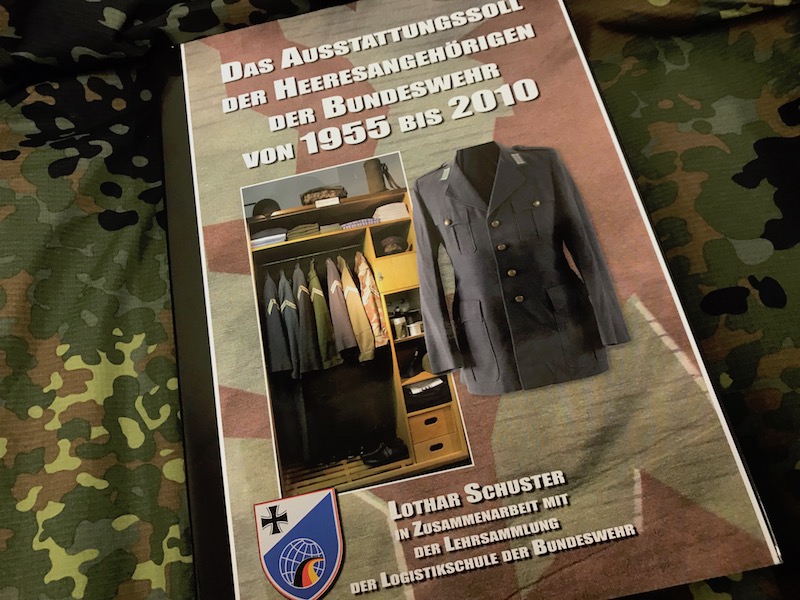
Historical materialism is no longer as "in" as it used to be. However, here it is justified. Not only in an army, but fundamentally, being determines consciousness. And "being" is primarily the equipment. The Bundeswehr, currently often involved in equipment discussions, as there is too little or it does not work, also started small at some point. And so it is with this book: starting from the ground up, so to speak. But everything is there - in a book that can be used to kill ground-dwelling birds. With "Das Ausstattungssoll der Heeresangehörigen der Bundeswehr von 1950 bis 2010" ("The equipment standard of the Army members of the Bundeswehr from 1950 to 2010"), Lothar Schuster documents the equipment history of the German Army in a richly illustrated volume.
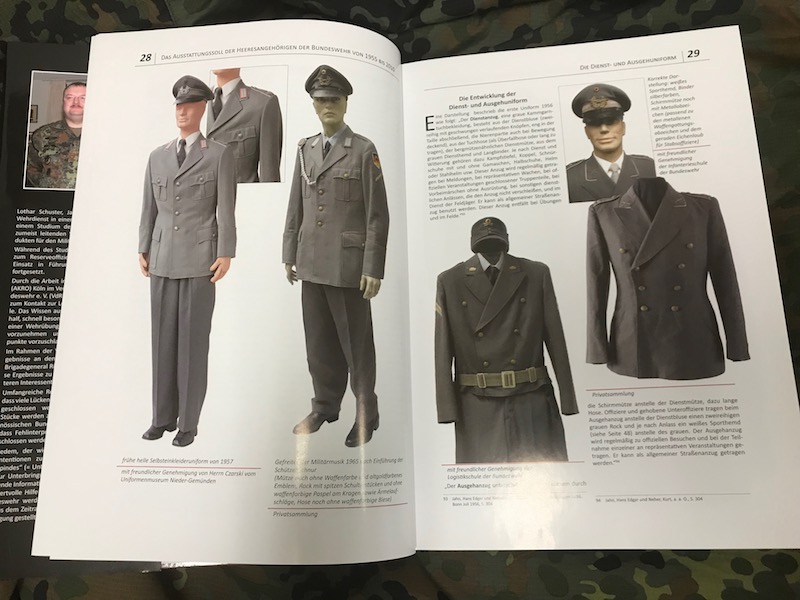 Here the author peeks out from behind the first uniforms of the Bundeswehr on the left. A reserve officer, professionally involved in the defense industry, came into contact with the teaching collection of the Logistics School as a reservist: that is the foundation for this book, where much was stored that with a knowledgeable eye, makes up the equipment history of the Army. Here, the first service uniforms.
Here the author peeks out from behind the first uniforms of the Bundeswehr on the left. A reserve officer, professionally involved in the defense industry, came into contact with the teaching collection of the Logistics School as a reservist: that is the foundation for this book, where much was stored that with a knowledgeable eye, makes up the equipment history of the Army. Here, the first service uniforms.
 The Bundeswehr has always had a self-chosen problem with tradition, which has to do with the fact that its predecessor army was very present in the world. Today, distancing is actually much easier than back when the Bundeswehr was founded. This is evident not only in the first cloth coats...
The Bundeswehr has always had a self-chosen problem with tradition, which has to do with the fact that its predecessor army was very present in the world. Today, distancing is actually much easier than back when the Bundeswehr was founded. This is evident not only in the first cloth coats...
 ... but also in early maneuver photos with referees and other field greys, along with the Bundeswehr's first camouflage pattern.
... but also in early maneuver photos with referees and other field greys, along with the Bundeswehr's first camouflage pattern.
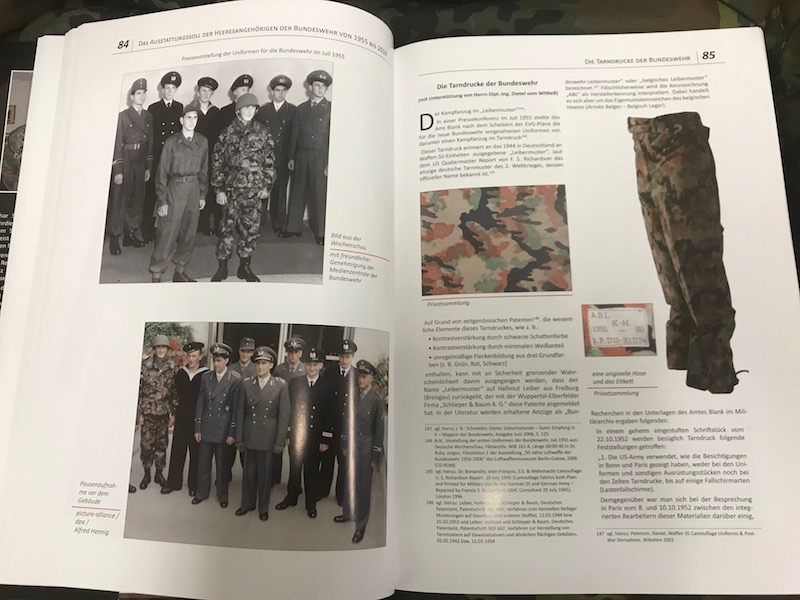 However, things could have been even worse. The initial idea for a new camouflage pattern started with the Leibermuster, the most modern pattern at the time. This first IR-compatible camouflage was supposed to be introduced uniformly into the Army and Waffen SS in 1945 - made it to testing during the initial phase of the Bundeswehr, but not further. The Swiss then successfully introduced a derivative of it. Schuster documents the whole history here in detail. Very exciting!
However, things could have been even worse. The initial idea for a new camouflage pattern started with the Leibermuster, the most modern pattern at the time. This first IR-compatible camouflage was supposed to be introduced uniformly into the Army and Waffen SS in 1945 - made it to testing during the initial phase of the Bundeswehr, but not further. The Swiss then successfully introduced a derivative of it. Schuster documents the whole history here in detail. Very exciting!
 Various patterns from the early days, the book also brilliantly describes the thoughts behind each one, whether it's splinter camouflage in two variations or a pattern that seemed to be inspired by the Russian amoeba, also called amoeba camouflage.
Various patterns from the early days, the book also brilliantly describes the thoughts behind each one, whether it's splinter camouflage in two variations or a pattern that seemed to be inspired by the Russian amoeba, also called amoeba camouflage.
 If you love camouflage patterns, you will also love this book: From the field gray of the Bundeswehr (left) to the new, current flecktarn, it was indeed a long way. In the book, Schuster documents the test series related to it.
If you love camouflage patterns, you will also love this book: From the field gray of the Bundeswehr (left) to the new, current flecktarn, it was indeed a long way. In the book, Schuster documents the test series related to it.
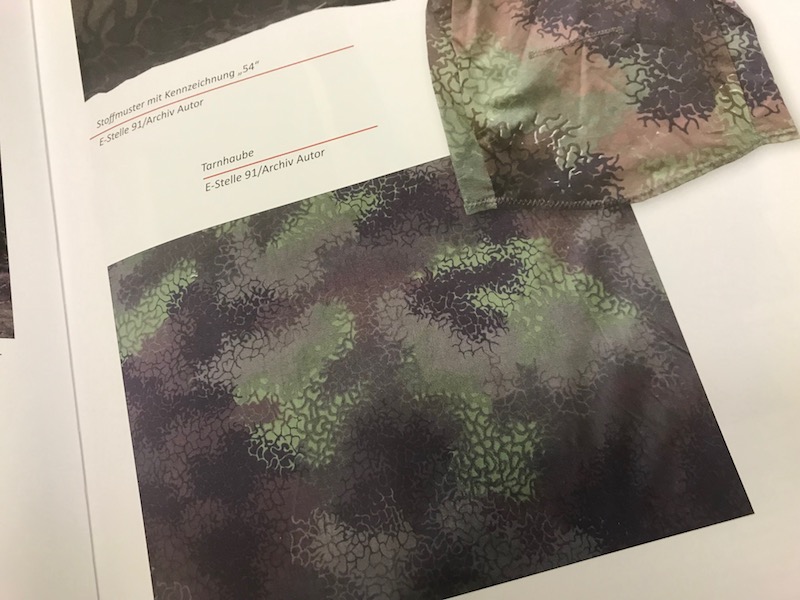 And it's really fun to look at, because there were many different variations that were wanted. The German Army is very scientific and meticulous in this regard, here's S4 in field testing. Very fractal!
And it's really fun to look at, because there were many different variations that were wanted. The German Army is very scientific and meticulous in this regard, here's S4 in field testing. Very fractal!
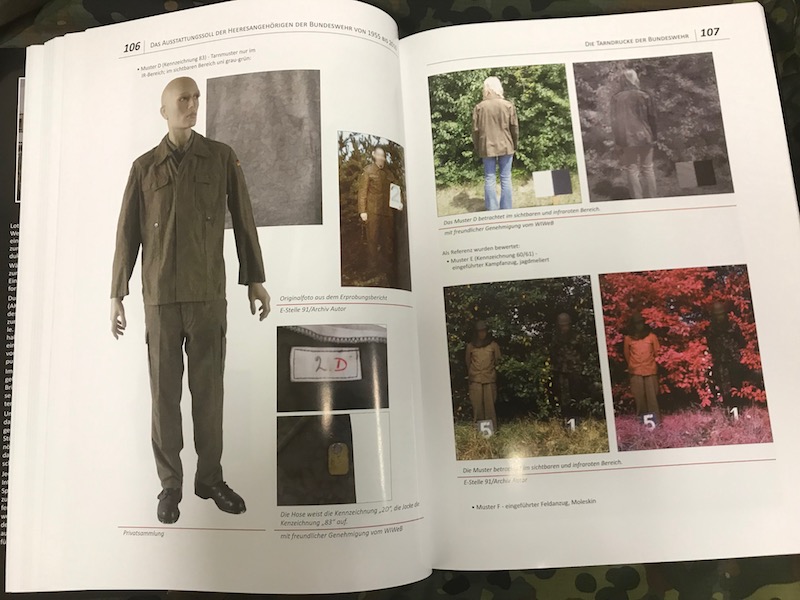 The material in "Ausrüstungssoll" is very dense: here the classic gray field uniform and the photos from the test series.
The material in "Ausrüstungssoll" is very dense: here the classic gray field uniform and the photos from the test series.  Even flecktarn is not the same as flecktarn. With so many spots, you can play around until the mix is right.
Even flecktarn is not the same as flecktarn. With so many spots, you can play around until the mix is right.
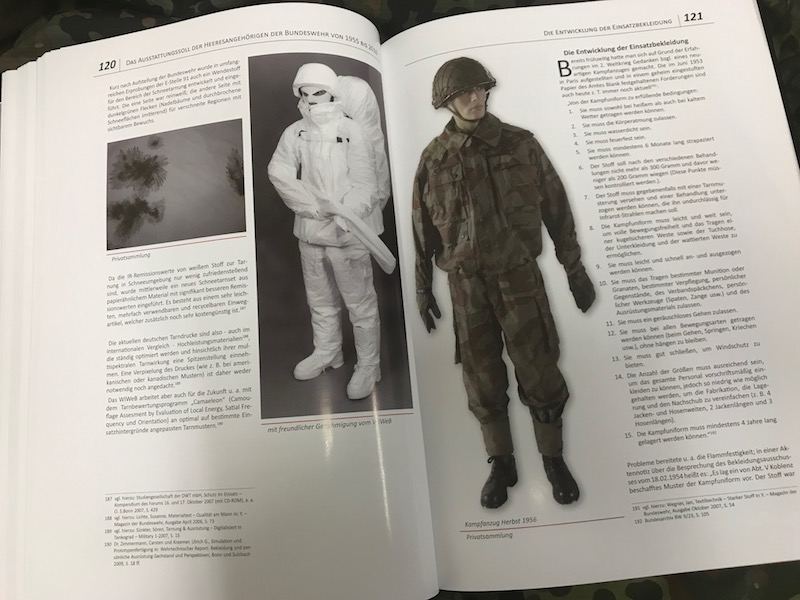 From winter camouflage suits to complete operational clothing, everything the Bundeswehr has worn is represented here.
From winter camouflage suits to complete operational clothing, everything the Bundeswehr has worn is represented here.
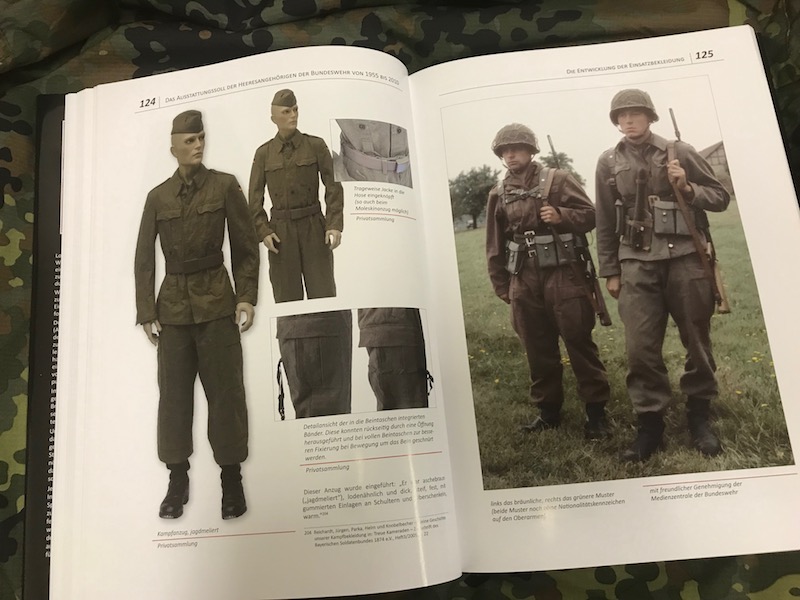 Most of the time was gray, but even that came in different cuts, as can be seen from these images alone. For those who love equipment, this not only offers a lot to read, but also much to study in the images.
Most of the time was gray, but even that came in different cuts, as can be seen from these images alone. For those who love equipment, this not only offers a lot to read, but also much to study in the images.
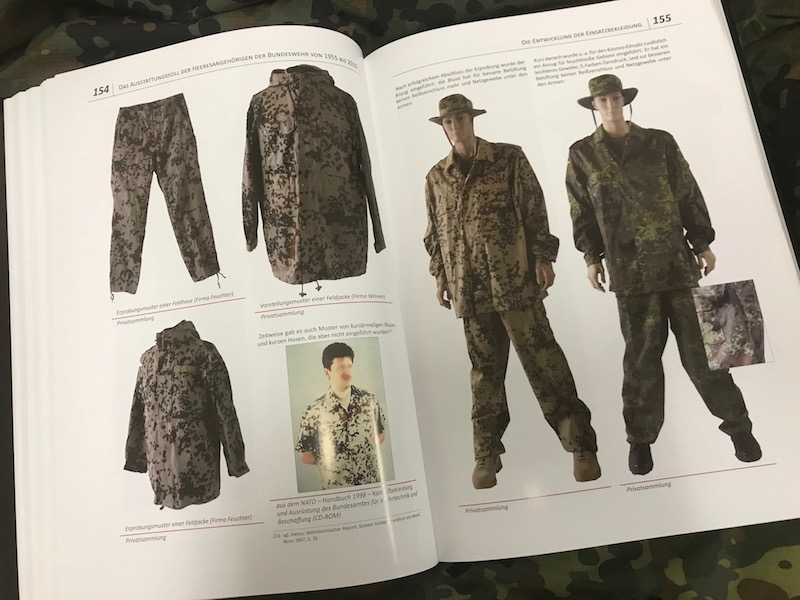 And there's a lot under the sun when it comes to patterns. Clothing for hot climates, after all, Germany's security is defended at the Hindukush. Nobody knew how right this man was...
And there's a lot under the sun when it comes to patterns. Clothing for hot climates, after all, Germany's security is defended at the Hindukush. Nobody knew how right this man was...
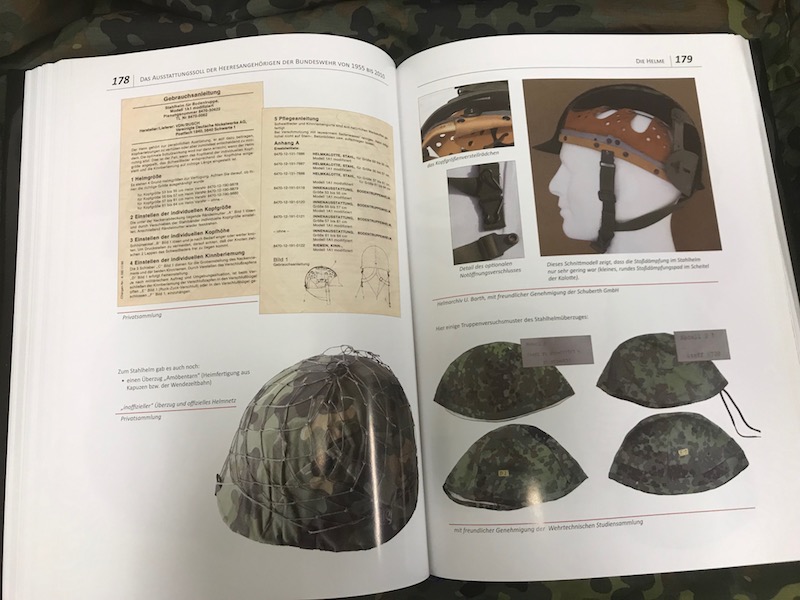 The history of modern German helmets is naturally also documented and photographed in "Ausrüstungssoll."
The history of modern German helmets is naturally also documented and photographed in "Ausrüstungssoll."
SPARTANAT is the online magazine for Military News, Tactical Life, Gear & Reviews. 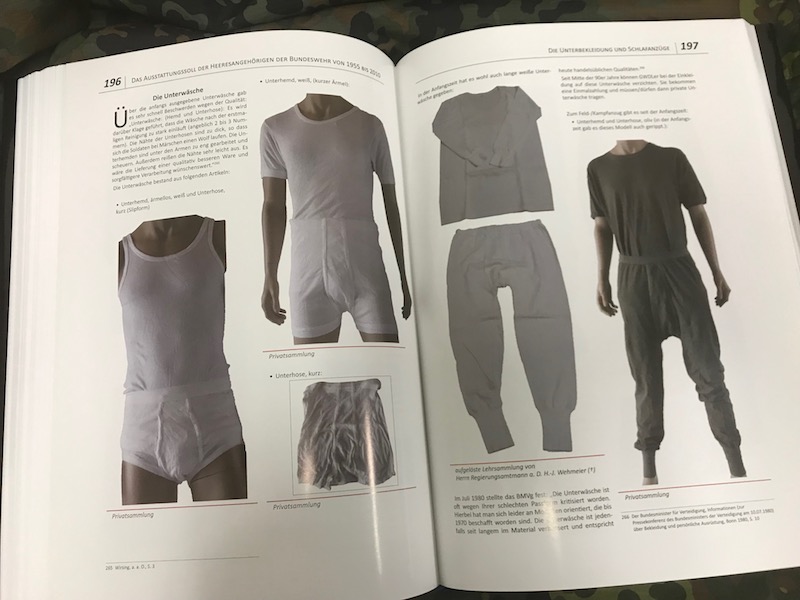
Send us your news: [email protected]
Ad
similar
Get the weekly SPARTANAT newsletter.
Your bonus: the free E-Book from SPARTANAT.


